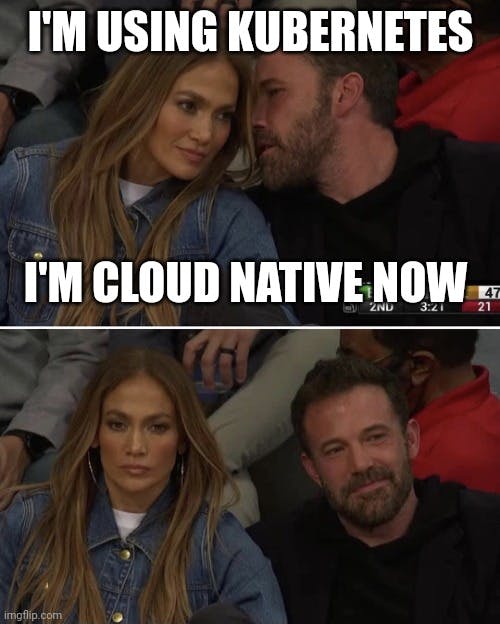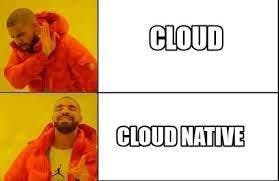Table of contents
- Step 1: Define Your OAM Components
- Step 2: Define Traits and Scopes
- Step 3: Deploy and Manage Your Application
- Step 1: Install Crossplane
- Step 2: Create OAM Resources
- Step 3: Define Application Configuration
- Step 4: Deploy Your Application
- Step 5: Manage Your Application
- Let's Explore More: Deploying Microservices with Open Application Model (OAM): A Real-World Use Case
- Conclusion
Are you tired of grappling with complex and time-consuming application deployments? Are you seeking a solution to streamline the process and boost efficiency? Look no further! Open Application Model (OAM) is the answer.

In today's fast-paced realm of software development, application deployments can be daunting. Multiple cloud platforms, container runtimes, and configuration management tools, each with its own complexities. That's where OAM comes into play. OAM is an open standard that simplifies the deployment and management of applications across diverse cloud platforms and container runtimes.
Let's delve into a use-case scenario to illustrate how OAM can make your application deployment process seamless and effective.
Imagine you are a developer working on a cloud-native application with multiple microservices deployed on Kubernetes. Each microservice demands different resources, configurations, and dependencies. Managing these intricate deployments can become overwhelming, especially when the application evolves over time and necessitates updates and scaling.

With OAM, you can define your application components, their configurations, and dependencies declaratively using a simple and unified model. This model is platform-agnostic, meaning you can use it to deploy your application on any Kubernetes cluster or cloud platform that supports OAM.
Let's see how this works in practice. You define your application components as OAM components using the OAM model specification, which encompasses components, traits, and scopes. Components serve as the building blocks of your application, such as containers, databases, or APIs. Traits represent the configurations you want to apply to your components, such as scaling policies, health checks, or security settings. Scopes define how components are grouped together, such as environments or namespaces.
Once you have defined your OAM components, traits, and scopes, you can utilize a runtime controller, such as the Kubernetes-based Crossplane, to deploy and manage your application. The controller translates your OAM components into Kubernetes resources, such as Deployments, Services, or ConfigMaps, and applies them to your cluster. This enables you to leverage the full power of Kubernetes for managing your application deployments, scaling, updates, and rollbacks.

The beauty of OAM lies in its clear separation of concerns between developers and operators. Developers can concentrate on defining the application components and their configurations, while operators can handle the deployment and operation of the application using familiar Kubernetes tools and workflows. This fosters better collaboration between development and operations teams, as well as more efficient and reliable application deployments.
But OAM doesn't stop there. It also offers extensibility and flexibility, enabling you to define your own custom components, traits, and scopes tailored to your specific application requirements. This makes OAM a powerful tool for building and managing complex and dynamic cloud-native applications. Simplify Application Deployment with Open Application Model (OAM) - A Step-by-Step Guide
Are you looking for a way to simplify your application deployments and make them more efficient and scalable? Look no further! Open Application Model (OAM) is an open standard that can help you achieve exactly that. In this blog post, we will walk you through a step-by-step guide on how to use OAM to streamline your application deployment process with code examples.
Step 1: Define Your OAM Components
The initial step in utilizing OAM is to define the components of your application using the OAM model specification. For instance, if you have a basic web application with a frontend and a backend component, you can define these components as OAM components by creating a YAML file with the following details:
# frontend.yaml
apiVersion: core.oam.dev/v1alpha2
kind: Component
metadata:
name: frontend
spec:
workload:
definition:
apiVersion: apps/v1
kind: Deployment
metadata:
name: frontend
spec:
replicas: 3
selector:
matchLabels:
app: frontend
template:
metadata:
labels:
app: frontend
spec:
containers:
- name: frontend
image: my-frontend-image
ports:
- containerPort: 80
# backend.yaml
apiVersion: core.oam.dev/v1alpha2
kind: Component
metadata:
name: backend
spec:
workload:
definition:
apiVersion: apps/v1
kind: Deployment
metadata:
name: backend
spec:
replicas: 2
selector:
matchLabels:
app: backend
template:
metadata:
labels:
app: backend
spec:
containers:
- name: backend
image: my-backend-image
ports:
- containerPort: 8080
In this illustration, we define two components, namely frontend, and backend, as OAM components. Each component outlines its workload definition, which is a Kubernetes Deployment in this instance, along with details such as replicas, images, and ports.
Step 2: Define Traits and Scopes
Following this, we can define traits and scopes to configure and group our components. For instance, let's establish a trait to specify the scaling policy for our frontend component:
# scaling-trait.yaml
apiVersion: core.oam.dev/v1alpha2
kind: Trait
metadata:
name: scaling
spec:
appliesToWorkloads:
- backend
configuration:
replicas: 4
In this illustration, we create a scaling trait that is assigned to the backend component and sets a replica count of 4.
Additionally, we can define scopes to group our components together. For instance, let's define a scope for the production environment of our application:
# production-scope.yaml
apiVersion: core.oam.dev/v1alpha2
kind: Scope
metadata:
name: production
spec:
scopeReference:
name: production
scopeReference:
kind: Namespace
In this instance, we define a production scope that references a Kubernetes Namespace named "production", which allows us to group all the components of the production environment under this specific scope.
Step 3: Deploy and Manage Your Application
OAM components, traits, and scopes are translated into Kubernetes resources and applied to your cluster. Below is an example of how you can deploy and manage your application using the Crossplane operator with OAM:
Step 1: Install Crossplane
You can install the Crossplane operator on your Kubernetes cluster using Helm or Kubectl. Here's an example using Helm:
helm repo add crossplane-stable https://charts.crossplane.io/stable
helm repo update
helm install crossplane --namespace crossplane-system crossplane-stable/crossplane
Step 2: Create OAM Resources
Generate the OAM resources, which encompass components, traits, and scopes, within your Kubernetes cluster. You can apply them using Kubectl or by directly applying YAML files. For instance:
kubectl apply -f frontend.yaml
kubectl apply -f backend.yaml
kubectl apply -f scaling-trait.yaml
kubectl apply -f production-scope.yaml
Step 3: Define Application Configuration
Set up your application configuration by creating an OAM ApplicationConfiguration resource. This resource outlines the components, traits, and scopes that constitute your application, along with their respective configurations. Here's an example:
# application-config.yaml
apiVersion: core.oam.dev/v1alpha2
kind: ApplicationConfiguration
metadata:
name: my-application
spec:
components:
- componentName: frontend
traits:
- trait:
name: scaling
properties:
replicas: 4
- componentName: backend
traits: []
scope: production
In this instance, we establish an ApplicationConfiguration that encompasses the frontend and backend components and applies the scaling trait to the frontend component with a replica count of 4. Additionally, we specify the production scope for this particular application.
Step 4: Deploy Your Application
Apply the ApplicationConfiguration resource to your cluster to deploy your application. For example:
kubectl apply -f application-config.yaml
The Crossplane operator will interpret the ApplicationConfiguration resource and utilize the OAM components, traits, and scopes to create and manage the corresponding Kubernetes resources, such as Deployments, Pods, and Services, for your application.
Step 5: Manage Your Application
You can now use standard Kubernetes tools and commands to manage your application. For instance, you can use Kubectl to scale your application, update configurations, or monitor the status of your components. The Crossplane operator will ensure that any changes you make to the OAM resources, such as the ApplicationConfiguration, will be reflected in the corresponding Kubernetes resources.
Let's Explore More: Deploying Microservices with Open Application Model (OAM): A Real-World Use Case
Microservices architecture has gained widespread adoption in modern application development due to its flexibility, scalability, and ability to enable rapid development and deployment of complex applications. However, managing and deploying microservices can be challenging, especially when dealing with multiple services, dependencies, and configurations. This is where the Open Application Model (OAM) standard comes into play, providing a powerful framework for defining, deploying, and managing cloud-native applications in a consistent and portable manner. In this blog post, we will explore a real-world use case of using OAM to deploy microservices and highlight the capabilities of this powerful standard, along with code snippets for reference.
The Use Case: Building a Scalable E-commerce Application
Let's consider an e-commerce application that consists of several microservices, including a product service, a shopping cart service, a payment service, and an order service. These microservices need to be deployed, scaled, and managed independently, and they may have different requirements for resources, configurations, and scaling policies. The e-commerce application needs to be highly scalable, fault-tolerant, and easily deployable across multiple cloud environments, such as AWS, Azure, and Google Cloud.
Deploying Microservices with OAM:
Declarative Configuration with OAM: With OAM, we can define each microservice as an individual "Component" using a declarative configuration approach. Here's an example of defining a component using OAM's declarative YAML configuration:
apiVersion: core.oam.dev/v1alpha2
kind: Component
metadata:
name: product-service
spec:
workload:
apiVersion: apps/v1
kind: Deployment
metadata:
name: product-service
spec:
replicas: 3
template:
spec:
containers:
- name: product-service
image: my-registry/product-service:v1.0
ports:
- containerPort: 8080
In this example, we define a component for the product service, specifying the desired state of the application using the spec field. We define the workload as a Kubernetes Deployment, specifying the container image, number of replicas, and other configurations.
Using Portable Templates with OAM:
OAM provides a template-based approach for defining components and applications, allowing us to define reusable and composable templates that can be used across different applications. Here's an example of defining a template for a Redis database using OAM:
apiVersion: core.oam.dev/v1alpha2
kind: TraitDefinition
metadata:
name: redis
spec:
schema:
properties:
password:
type: string
description: Redis password
required: ["password"]
In this example, we define a template for a Redis database as a TraitDefinition using the OAM schema. We specify the properties that can be configured, such as the password, and mark it as required. This template can be reused across different components that need a Redis database, ensuring consistency and standardization.
Enabling Flexible Scaling with OAM:
OAM allows us to define scaling policies for components, specifying how they should be scaled based on different metrics. Here's an example of defining a scaling policy for the product service component using OAM:
apiVersion: core.oam.dev/v1alpha2
kind: ApplicationConfiguration
metadata:
name: e-commerce-app
spec:
components:
- name: product-service
type: core.oam.dev/v1alpha2.Component
properties:
replicas: 3
autoscaling:
enabled: true
Conclusion
Using an Open Application Model (OAM) with a runtime controller like the Crossplane operator can simplify your application deployment process and make it more efficient and scalable. With OAM, you can define your application components, traits, and scopes using a declarative YAML-based approach, and use a runtime controller to manage the deployment and configuration of your application in a Kubernetes cluster. Give it a try and see how it can streamline your application deployments!

Subscribe to our newsletter for more articles and guides on Ethereum. If you have any feedback, feel free to reach out to us via Twitter - You can always chat with us on our Discord community server, featuring some of the coolest developers you’ll ever meet :)
